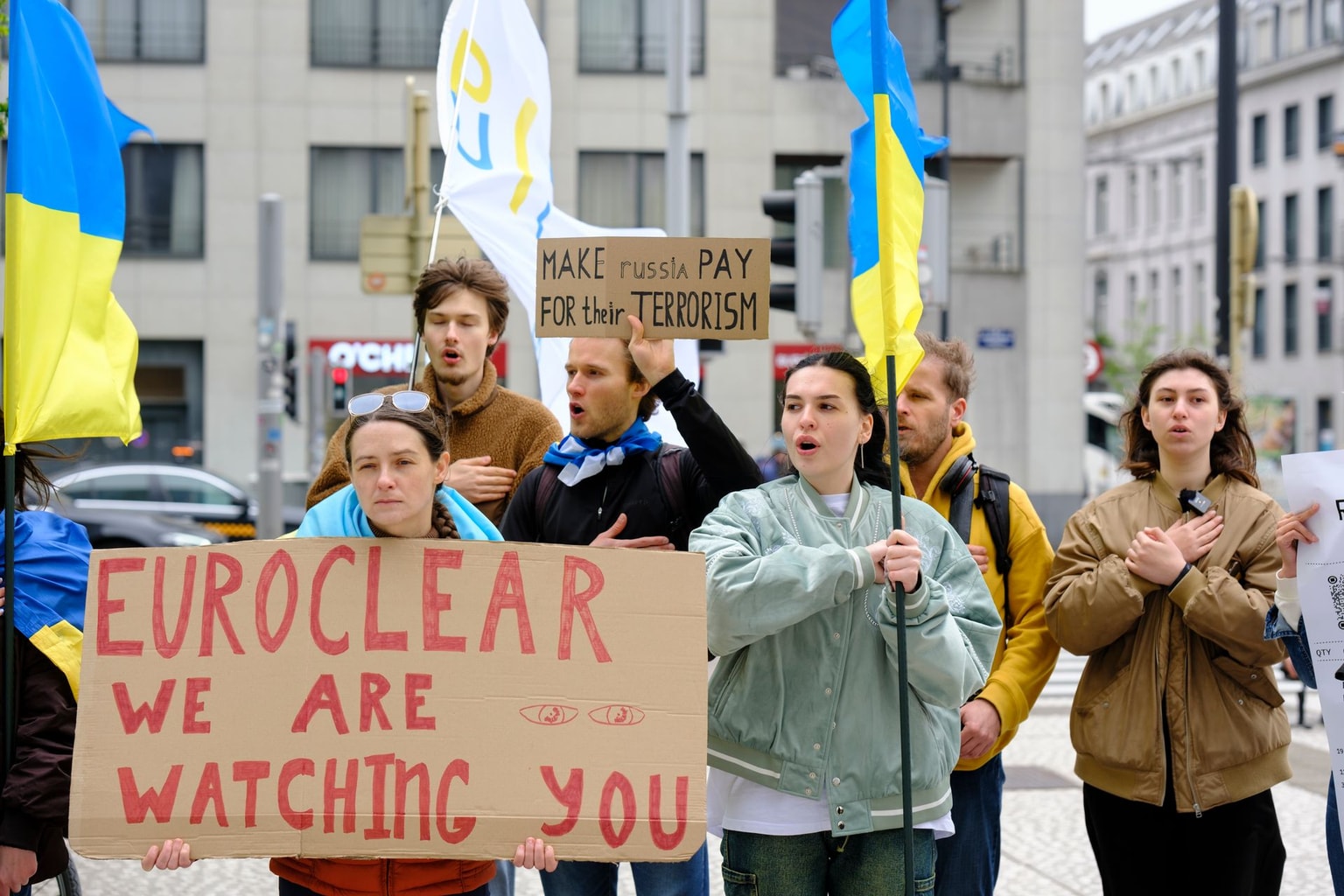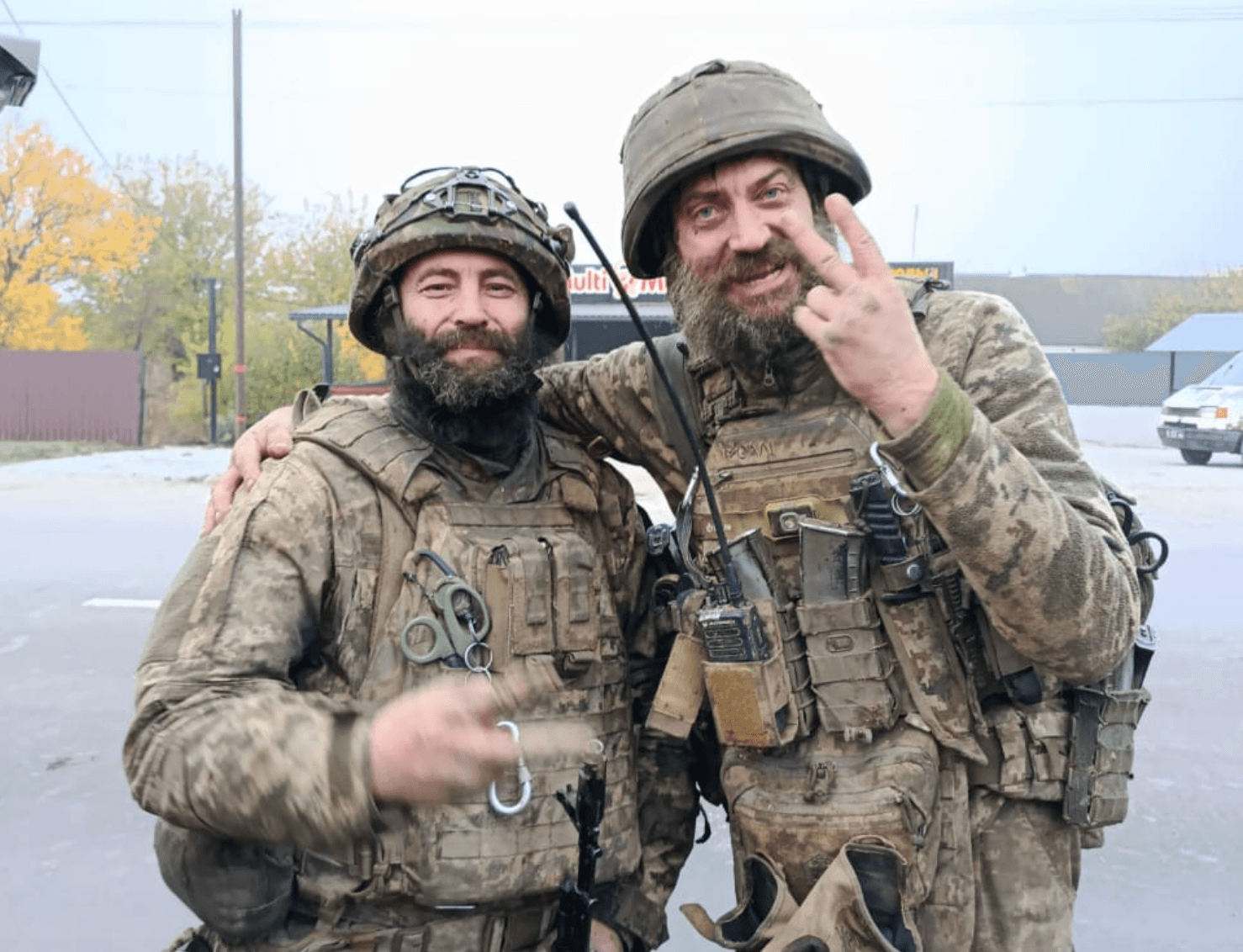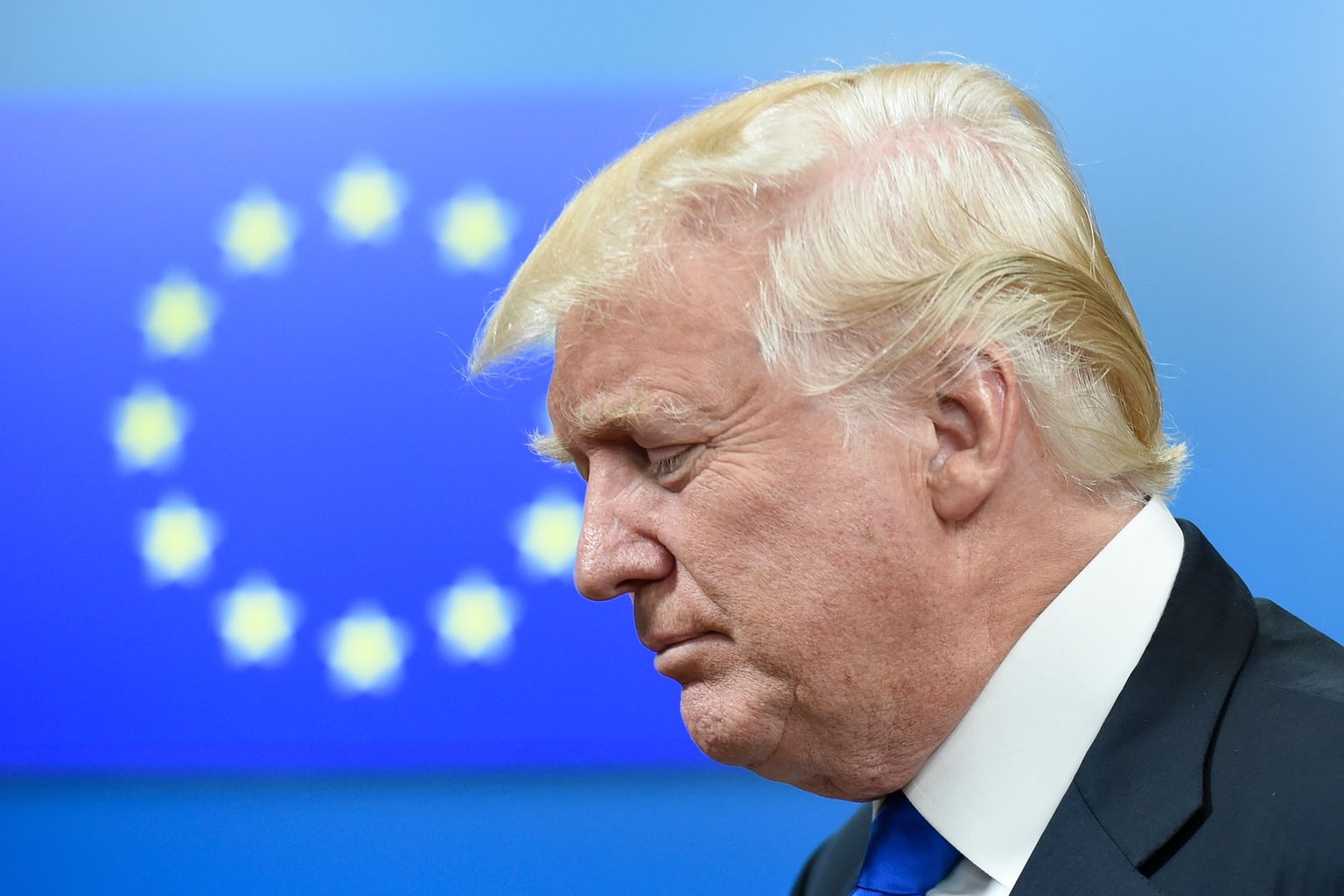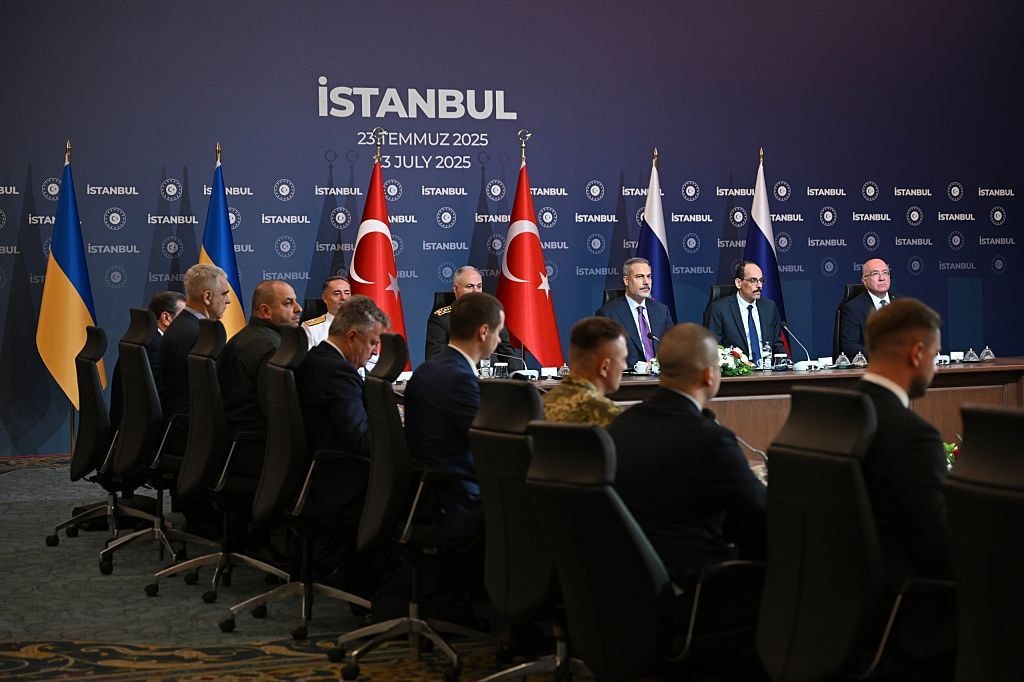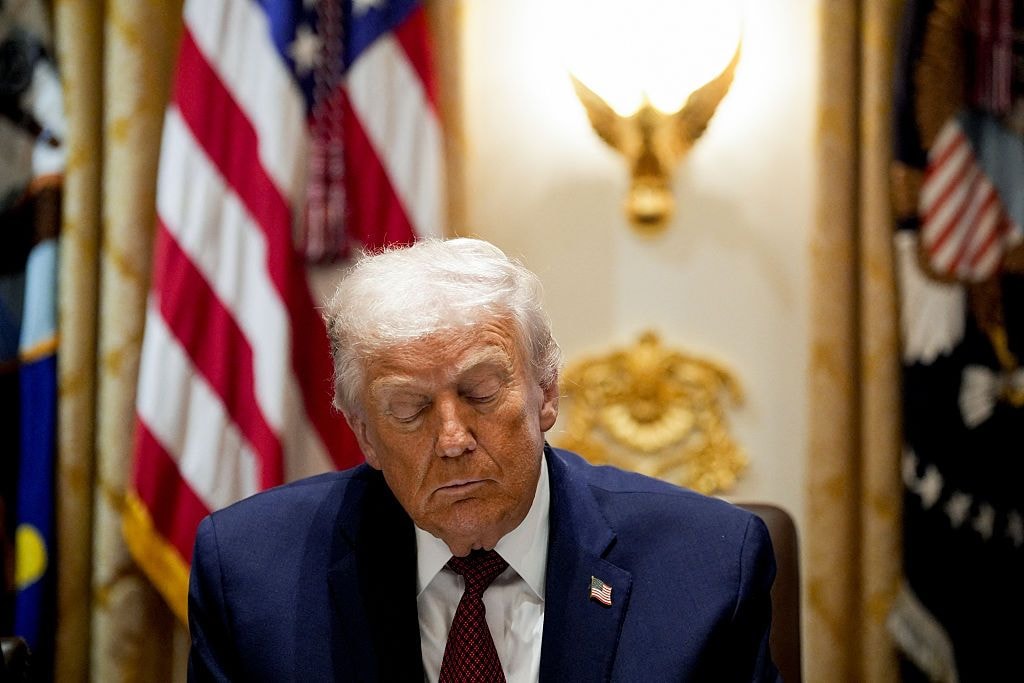‘Donbas is fiction’ — Kateryna Zarembo’s book dismantles Russian myths about Ukraine’s east

For some, Ukraine’s Donetsk and Luhansk oblasts evoke images of coal mines, industrial sprawl, and Russian-speaking culture oriented toward Moscow. Yet to accept this as the regions’ defining reality is to ignore a deeper truth: a Ukrainian heritage that Russia has spent centuries attempting to erase.
In the wake of independence, locals — navigating the complexities of a democratic transition after decades of authoritarian rule — sought to reclaim this identity, fostering a cultural revival that would gradually weave these regions more firmly into the national fabric. But in 2014, war brought that resurgence to a brutal halt.
As Russia's war of aggression continues to devastate cities in both regions and force the remaining locals into occupation under the pretext of “protecting” the local Russian-speaking population from the Ukrainian government, understanding the true story of Donetsk and Luhansk oblasts has never been more important.
Kateryna Zarembo’s “Ukrainian Sunrise: Stories of the Donetsk and Luhansk Regions from the Early 2000s,” now available in English translation, challenges the long-standing Soviet-era myths about Ukraine’s east. Drawing from field research conducted leading up to the full-scale invasion, Zarembo illuminates how locals were in the process of reclaiming their regions’ Ukrainian identity.
While Zarembo currently dedicates part of her time to volunteering as a combat medic with the Hospitallers battalion, she is, first and foremost, an academic. “Ukrainian Sunrise” reads like a scholarly work, yet the way it is written remains accessible to a broad audience. Her commitment to fieldwork and firsthand interviews makes the book a far more reliable resource on the people of the region than the perspectives of think tanks with opaque funding sources or journalists who parrot Russian talking points.
Zarembo’s approach ensures that the voices of those in Donetsk and Luhansk oblasts are heard directly — she serves not as an interpreter, but as a conduit for their stories.
She opens “Ukrainian Sunrise” with a compelling takedown of the term "Donbas," a label frequently applied to both regions as part of a larger whole. She contends that this historical term not only oversimplifies but also misrepresents the distinct identities of Donetsk and Luhansk oblasts, obscuring the diverse experiences of the people who called them home.
A portmanteau of “Donets Basin,” the term “Donbas” has been in use since the 19th century and has referred not only to Donetsk and Luhansk oblasts but also parts of Dnipropetrovsk Oblast and even regions of southern Russia. While the term conjures images of sprawling industrial cities for most people, Zarembo references the words of a Luhansk scholar who noted that several districts in his region north of the Siverskyi Donets River were known not for mining, but for their agricultural landscapes.


“The myth of Donbas deliberately erases the peculiarities of the region at the micro level and portrays it as a homogenous whole,” Zarembo writes. “In fact, residents of the region would be the first to say that ‘Donbas’ and ‘the Donetsk and Luhansk regions’ are not synonymous.”
The prevalence of the Ukrainian language in Donetsk and Luhansk oblasts — more than 60% according to a census conducted in the Russian Empire in the late 19th century — persisted until the Holodomor man-made famine and Stalinist purges of the 1930s, which marked what Zarembo characterizes as an "all-out" assault on Ukrainian culture. During this period, Ukrainian teachers were branded as "class traitors," and miners faced arrest for reading so-called "nationalist literature."
“The region was too important for the Soviet Union to tolerate its Ukrainian identity. And not only Ukrainian identity: the Soviet myth of Donbas as an ‘All-Union furnace’ not only rejected other identities, it also denied their very existence, except for heavy industry workers,” according to Zarembo.
“The region was too important for the Soviet Union to tolerate its Ukrainian identity."
To this day, the most enduring stereotype surrounding both regions is its singular identity as Ukraine’s coal-mining heartland. While mine workers enjoyed relatively high salaries until the 1960s, the industry’s profitability began to decline in subsequent decades. Lower wages, substandard coal quality compared to international benchmarks, and perilous working conditions shaped by inadequate regulations — such was the stark reality of coal mining in Donetsk and Luhansk oblasts, far removed from its mythologized image. For many young people, mining became a profession of last resort, pursued only when other opportunities failed to materialize.
Politicians attempted to perpetuate the “miner’s myth,” into the years of Ukraine’s independence, but as Zarembo writes, “the coal mined in Donbas was so much higher than the price at which it was sold that the region received regular subsidies from the state budget, which peaked during the presidency of Viktor Yanukovych.”

Under Soviet rule, the pervasiveness of the Russian language in Donetsk and Luhansk oblasts was meticulously cultivated through policies that marginalized and stigmatized the Ukrainian language. Yet, as Zarembo astutely observes, linguistic preference in the early 2000s did not serve as a definitive marker of political allegiance. Russian speakers could be patriotic Ukrainians who feel no deep affinity toward Russia, while Ukrainian speakers could be Euro skeptics. These complexities, Zarembo emphasizes, were not unique to Donetsk and Luhansk — they were emblematic of broader dynamics throughout Ukraine at that time.
The politics of historical memory was a mechanism through which these complexities often had to be navigated. In 2008, a proposal emerged to rename Donetsk National University in honor of Vasyl Stus, the 20th-century poet who grew up in Donetsk and died in a Russian penal colony in 1985. This initiative was championed by the student organization Poshtovkh (“Impetus” in Ukrainian), which had been founded just two years earlier in 2006, amid a national movement to reembrace Ukraine’s historical memory, fostered by then-President Viktor Yushchenko.
As one of its members reflects in the book, the group's mission was clear: “We thought if we educated people about the history of the region and explained that Ukrainian culture was not inferior to Russian culture, then we would be contributing to the integration of this region into the general cultural landscape of Ukraine.”
Stus’ legacy in Donetsk was one of competing narratives, shaped by whether one’s view was oriented toward the past or present. To those still tethered to the Soviet mindset, he was an enemy. But for those who envisioned a free and independent Ukraine, he stood not only as a talented poet but as a hero and martyr for Ukraine’s struggle.
Poshtovkh members, driven by a desire to honor Stus, collected nearly 1,500 signatures from students and faculty at Donetsk National University, and also earned support at the national level from key figures like Yushchenko. However, their campaign quickly became a flashpoint for regional political tensions.
A lawmaker from the pro-Russian Party of Regions proposed instead that the university be named after a former first secretary of the regional Communist Party. Other members of the pro-Russian camp launched a series of heated roundtable discussions against the renaming of the university, all while distributing blue and yellow ribbons — Ukraine’s national colors — as a defensive gesture against charges of anti-patriotism.

The university administration, convinced that the students were "agents" of the Orange Revolution, which had bolstered Yushchenko’s political rise, turned the campaign into an ideological battleground. In the end, the administration voted against the renaming, and efforts were made to discredit Poshtovkh in the eyes of the public.
The resistance to cultural initiatives in Donetsk might seem baffling at first glance. Poshtovkh, for instance, faced staunch opposition not only when advocating for the renaming of the university but also when attempting to organize a Vertep festival — a centuries-old Ukrainian Christmas tradition — in the city’s central square.
As Zarembo points out, this hostility is rooted in the enduring legacy of Soviet myths about Donetsk and Luhansk oblasts, myths that relegated culture to an "unnecessary" status for its vision of the industrial Donbas. These narratives, designed to erase local identity, left little room for expressions of Ukrainian heritage, reinforcing a landscape where cultural initiatives were viewed with suspicion.
As such, the music, literature, and theater that emerged in Donetsk and Luhansk oblasts can only be described as being part of what Zarembo calls an “artistic underground” or a “cultural insurgency.” These movements defied entrenched ideologies, striving to rejuvenate their cities and challenge the inertia of post-Soviet stagnation.
One of the most prominent examples of cultural reinvention in Donetsk is the Izolyatsia cultural center, founded in 2010 on the site of a former mineral wool factory. The center’s creation aimed to transform the factory from an industrial relic into a vibrant hub of social and cultural life. Through its innovative programming, Izolyatsia sought to shift the narrative of the region, using art as a lens for reimagining its identity.
Some of Izolyatsia’s artistic initiatives included inviting Chinese American artist Cai Guo-Qiang to create portraits of miners using gunpowder, or the art installation “Lipstick” by Cameroonian-Belgian artist Pascale Marthine Tayou, who dedicated it to the women of the region. A giant metallic red lipstick was installed on the top of the factory chimney, which Russian occupying forces would later blow up when they seized the premises.
The Izolyatsia art center’s singular, defining event was a Ukrainian literature festival held in late April 2014, despite the outbreak of the Russian invasion earlier that month. In a powerful act of cultural defiance against Russian aggression, some of Ukraine's most prominent literary figures, including Irena Karpa, Lyubko Deresh, and Kateryna Babkina committed to participating, embodying the resilience of Ukraine's intellectual and artistic spirit in the face of war.
Just months later, the Izolyatsia team, which relocated to Kyiv, received the grim news that the center had been seized by occupying forces, and its invaluable collection of artworks had been destroyed. The site has then been transformed into a notorious prison, infamous for the unspeakable acts of torture committed within its walls. Donetsk-born journalist Stanislav Aseyev’s memoir, “The Torture Camp on Paradise Street,” offers a chilling first-hand account of the brutality he endured during his own imprisonment at Izolyatsia.
Much of Donetsk and Luhansk oblasts has fallen under Russian occupation or been completely ravaged by over a decade of war. It remains unclear when peace will return to both regions as Russia advances along the front line and continues its assault. Yet, as Zarembo observes, these landscapes continue to find ways to evolve in the collective consciousness of Ukrainians, acquiring new meanings even amid all the destruction.
A notable example is the Azovstal steel plant in Russian-occupied Mariupol, a site once criticized for its environmental impact. With the onset of Russia's full-scale invasion, it was transformed into a powerful symbol of Ukrainian resilience, as outnumbered and outgunned soldiers entrenched themselves there during the Siege of Mariupol.


While many of those who sought to innovate Donetsk and Luhansk oblasts have been driven into exile due to Russia’s occupation, they continue to serve their country — either by contributing to cultural initiatives from elsewhere in Ukraine or by fighting for the country’s future on the front lines. This current period of the war, marked by the targeted devastation of Ukraine's east, represents yet another chapter in a long history of hardship for Ukraine’s Donetsk and Luhansk oblasts. Yet, as Zarembo suggests, there is always still room for hope.
“The history of the Ukrainian east demonstrates what this region has suffered from Russia every time it has tried to forge an alternative trajectory of development,” Zarembo writes.
“And the stories in this book confirm what it could have been if not for Russian interference; it had had the ten years the people featured in this book talk about. These stories illustrate what the Ukrainian east can still become.”
Kateryna Zarembo’s “Ukrainian Sunrise Stories of the Donetsk and Luhansk Regions from the Early 2000s is now available in Tetiana Savchynska’s English translation from Academic Studies Press.
Note from the author:
Hi, this is Kate Tsurkan, thanks for reading this article. There is an ever-increasing amount of books about or related to Ukraine available to English-language readers, and I hope my recommendations prove useful when it comes to your next trip to the bookstore. Ukrainian culture has taken on an even more important meaning during wartime, so if you like reading about this sort of thing, please consider supporting The Kyiv Independent.






